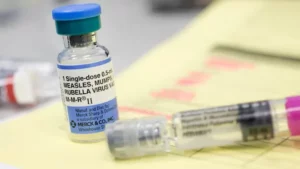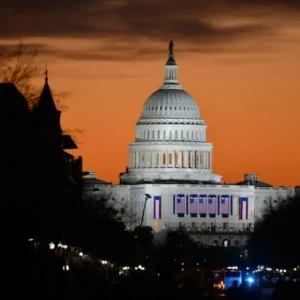As the midterm elections rapidly approach, history has long suggested that the party not holding the presidency often seeks to take control of Congress, thus averting much of the President’s agenda. This pattern has been repeated throughout our nation’s history, from Roosevelt’s incumbency in the 1930s, to President Donald Trump in 2018, when Republicans lost 41 House seats to the Democrats but gained two in the Senate. Early polling suggests that Democrats may be gearing up for a major comeback, with several key seats lying in the advantage of the respective Democratic candidates. However, polling has often been proven misleading and does not accurately depict key changes in the region’s attitude. Meanwhile, Republicans are refining their strategies to win back lost votes, including adopting a moderated political persona during the election season cleared of controversial votes and legislation. As a result, the Republican Party has struggled to connect with college-educated voters since 2016, who have been alienated by socially conservative legislation on issues such as abortion and LGBTQ+ rights. Notably, ethnic minorities have been surprisingly lenient to support the GOP in recent years, with over 45% of Hispanics casting their ballot for the 2024 Trump/Vance ticket, despite warnings from many officials over potential immigration restrictions.
Among the many unknowns in the midterms, turnout often determines the outcome. Disengagement with the government has historically handed Republicans easy victories, but if the 2026 midterms are a repeat of 2018, Republicans are at a likely disadvantage. The 2018 U.S. midterms had a historic turnout of 53.4 percent, the highest turnout in over four decades, in stark contrast to 2014, which recorded the lowest midterm turnout in U.S. history. Among demographics, one of the most significant increases in voter turnout occurred among 18 to 29-year-olds. A consistently liberal bloc, turnout surged by a massive 79 percent, narrowing the 65+ turnout, which rose by just over 3 points. Turnout expanded among all ethnic groups, particularly among Hispanics and Blacks, both Democratic stalwarts, who turned out with increases of 49 and 11 percentage points, respectively. History has proven that who shows up, and how many, can considerably influence the future leadership of our country.
Another plausible concern Republicans need to confront in the upcoming election is the decrease in voting share by noncollege white voters. In 2018, the share of white voters without college degrees decreased, while registered white voters with a college degree or graduate degree rose substantially. Noncollege whites only comprised two-fifths of the voting share, a poor sum for the GOP, which relies on the group as a consistent voting base. Noncollege whites have been one of the reasons behind Donald Trump’s surprise 2016 presidential victory, in addition to his second win in 2024. The lack of these target votes allowed Democrats to gain enough momentum among other demographics to counteract the Republican votes, thus delivering a major victory for the party.
Here in the Granite State, several contenders are up and ready to win. In the 1st Congressional District, Maura Sullivan and Stefany Shaheen will face off in the Democratic primary, while Chris Bright is close to deciding whether to run as a Republican for the seat. Chris Pappas, the current Representative for the 1st Congressional District, has chosen to leave his seat and run for the US Senate, while Democrat Rep. Maggie Goodlander and Republican Lily Tang Williams look to face off yet again for the 2nd Congressional District. Many issues and concerns are being brought up early during these campaigns, including potential Medicare cuts, illegal immigration, biological men in women’s sports, and lowering taxes. Stefany Shaheen, Senator Jeanne Shaheen’s daughter, who has chosen not to run for the Senate once again, has primarily focused on how the Trump administration has left behind health advancements. In the video message, the former Portsmouth city councilor emphasized her life experience as a working mother with a child suffering from Type 1 diabetes, and how that inspired her to co-found a business seeking to provide support to those suffering from chronic disease. Additionally, her announcement video took aim at many notable figures, including Robert “Bobby” F. Kennedy Jr, and Elon Musk, whom she claims embrace conspiracy theories and fight for billionaires and corporations rather than for their constituents. Representative Chris Pappas, running for the U.S. Senate, has highlighted his experience as a bipartisan Democrat in the U.S. House, underscoring his long-standing record on the people of New Hampshire while criticizing President Donald Trump and Republicans, including former Senator Scott Brown, who has been considering a run for the open seat. Lily Tang Williams has chosen to compete against incumbent Rep. Maggie Goodlander, whom she ran against just under 10 months ago, once again claimed her as a “carpetbagger” taking advantage of her expansive wealth and family ties. Both claims have been denied by Goodlander, although several disclosures suggest that her investments and holdings may be worth more than 30 million dollars. As for the Governor’s seat, no candidate has yet announced their campaign, although Governor Kelly Ayotte is widely expected to run again in 2026, following a successful campaign in 2024.
Across the nation, countless more candidates are mobilizing for the upcoming elections. In North Carolina, incumbent Senator Thom Tillis is in a pickle after a poll by Public Policy Polling (PPP) found the Senator has a 25% approval rating. This led Don Brown, a candidate for North Carolina’s 8th congressional district, to take this as an opportunity to run against the senator. In addition, the infamous censure by the NC Republican Party continues to loom in the background for Senator Tillis, after voting on the Biden-backed “Respect for Marriage Act.” Wiley Nickel, a Democratic one-term House representative, has filed to run as a Democrat in the race. However, all attention is on former North Carolina Governor Roy Cooper, who, if he chooses to run, is leading all hypothetical polls currently being conducted.
In Maine, Senator Susan Collins has not yet declared whether she wishes to run again in 2026, although if she does it will be her sixth term. Centrist discontent has prompted many Republicans to search for a new leader, such as Daniel Smeriglio, who has chosen to primary the incumbent on a more conservative platform of “Make Maine Great Again.” Jordan Wood, a Democrat and former chief of staff to U.S Representative Katie Porter, has also announced his candidacy for the seat.
The state of Georgia presents another key Senate race for 2026, with Sen. Jon Ossoff (D) being potentially vulnerable. The 38-year-old leads Republican challengers by a margin of 3 – 4%, though that margin has significantly decreased over the past three months. Multitudes of Republicans have entered the race, vying to receive the Republican nomination. As of now, three Republicans are officially running, and four are filing paperwork. President Donald J. Trump won the state by just over 2%, indicating that the fate of the Senate race will depend on the nation’s mood and general opinion of both parties and their performance. It must be further noted that Sen. Ossoff won the election by a mere 1.22%, and this was attained in 2020, a blue tide year.
Nationwide, the heat is intensifying as both parties seek to select the most viable candidate in each race. Senate Minority Leader Chuck Schumer is already reaching out to former Democratic candidates, recruiting the most potent candidates for the upcoming election. On the other side of the table, President Donald J. Trump and other top officials, such as Mike Johnson, Speaker of the House, are searching for individuals with the greatest name recognition, including those who are known to be loyal to President Trump and his agenda. Hundreds of millions of dollars are expected to be poured into campaigns in states ranging from North Carolina to New Hampshire, with each party vying to either maintain control or gain the beacon of power.










